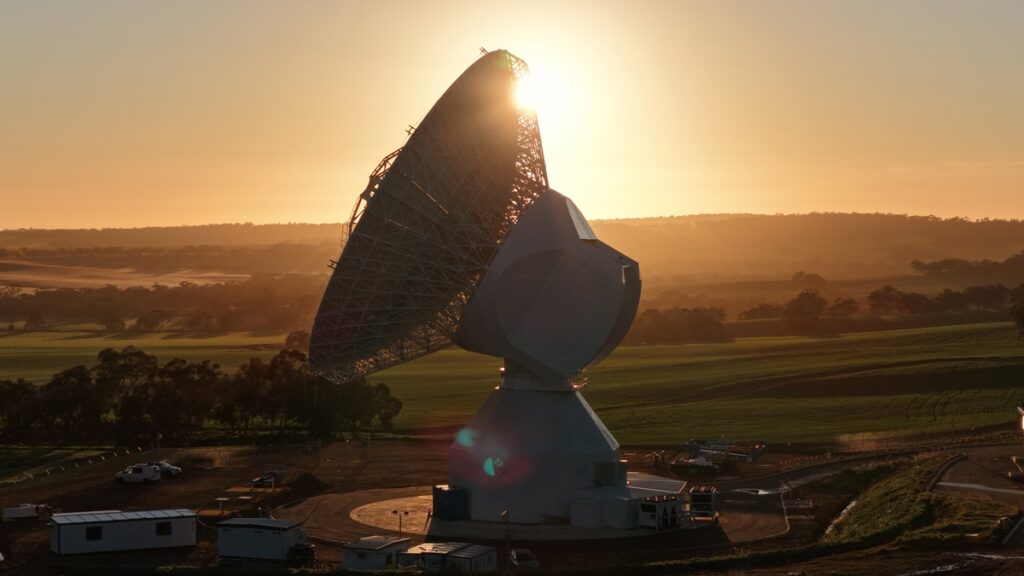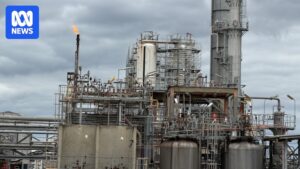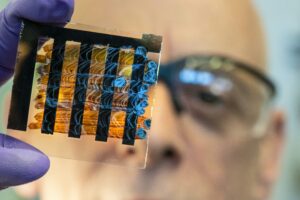
In a significant move to bolster its deep-space communication capabilities, the European Space Agency (ESA) inaugurated the ‘New Norcia 3’ antenna on October 4 in New Norcia, Western Australia, approximately 115 km north of Perth. This new infrastructure is set to address the agency’s rapidly growing data download demands and reinforce Europe’s independence and leadership in space exploration.
Josef Aschbacher, Director General of ESA, highlighted the importance of this development during the inauguration ceremony. He stated,
“This strategic investment reinforces ESA’s deep-space communication capabilities and maximises the return of our missions’ most valuable asset: data delivered from spacecraft voyaging far from Earth.”
The new antenna is expected to open exciting opportunities for collaboration between European and Australian space sectors, especially as Australia has announced its intention to negotiate a cooperative agreement with ESA.
Construction and Technological Advancements
Construction of the ‘New Norcia 3’ antenna began in 2021 and was completed on schedule, showcasing the collaborative efforts of ESA, European and Australian industries, and their Australian partners. When operational in 2026, the antenna will support ESA’s flagship missions, including Juice, Solar Orbiter, BepiColombo, Mars Express, and Hera. It will also be pivotal for upcoming missions such as Plato, Envision, Ariel, Ramses, and Vigil.
The antenna is part of ESA’s Estrack network and will facilitate international collaboration, supporting space agencies like NASA, Japan’s JAXA, and India’s ISRO, along with commercial space missions. This collaboration aims to enhance scientific returns and operational efficiency across the board.
Technological Sophistication and Capabilities
The newly inaugurated antenna is ESA’s fourth deep-space antenna and the second at the New Norcia site. It is the most technologically advanced antenna to date, featuring components cryogenically cooled to approximately -263°C, near absolute zero, allowing it to detect extremely weak signals from distant spacecraft and maximize data return.
Enrico Palermo, Head of the Australian Space Agency (ASA), emphasized Australia’s role in this development, stating,
“Australia is well known as a trusted, experienced and capable operator in deep-space communications. This investment by ESA and the Australian Government will unlock millions of dollars in local economic value as well as employment over the projected lifetime of 50 years.”
Economic and Scientific Impact
The inauguration ceremony was attended by key figures including ESA Director General Josef Aschbacher, Enrico Palermo, and Rolf Densing, ESA Director of Operations, along with Western Australia officials. The antenna’s construction cost is estimated at EUR 62.3 million, which includes antenna procurement, construction, and station upgrades. The Australian Space Agency contributed EUR 3 million towards the evolution of the New Norcia Station.
European industry led the construction, with Thales Alenia Space (France) and Schwartz Hautmont Construcciones Metálicas (Spain) as co-prime contractors. A significant portion of the budget was allocated to Australian companies, including TIAM Solutions, Thales Australia, Fredon, and Westforce Construction.
Hervé Derrey, CEO of Thales Alenia Space, remarked on the project’s success,
“This new deep-space antenna is a cornerstone for European and Australian space industries. Its inauguration demonstrates our capacity to build strategic, world-class space infrastructure anywhere.”
Future Prospects and Collaboration
ESA’s ground station and antennas in New Norcia are operated locally by CSIRO, Australia’s national science agency, which also manages NASA’s deep space communication complex near Canberra. The new antenna symbolizes the strong partnership between ESA and Australia, promising economic, technological, and scientific benefits for both entities. As negotiations for a new Cooperation Agreement between Australia and ESA begin, this partnership is poised for further growth in areas such as communications, space safety, and mission operations.
The ‘New Norcia 3’ antenna not only represents a leap in technological capabilities but also signifies a deeper collaboration between Europe and Australia in the realm of space exploration, promising a future of shared achievements and discoveries.





